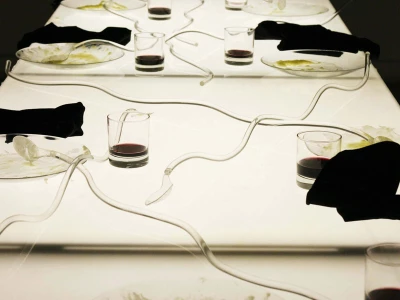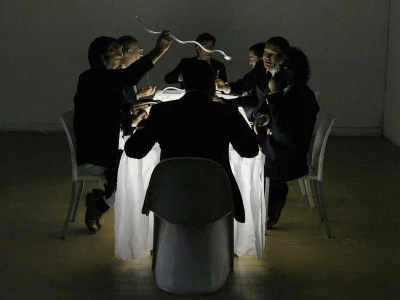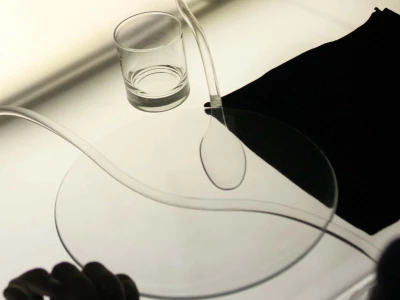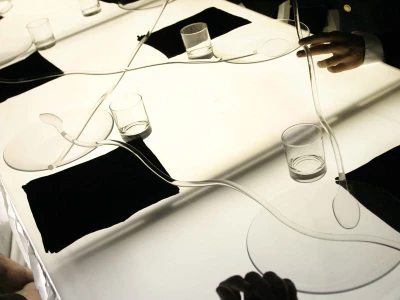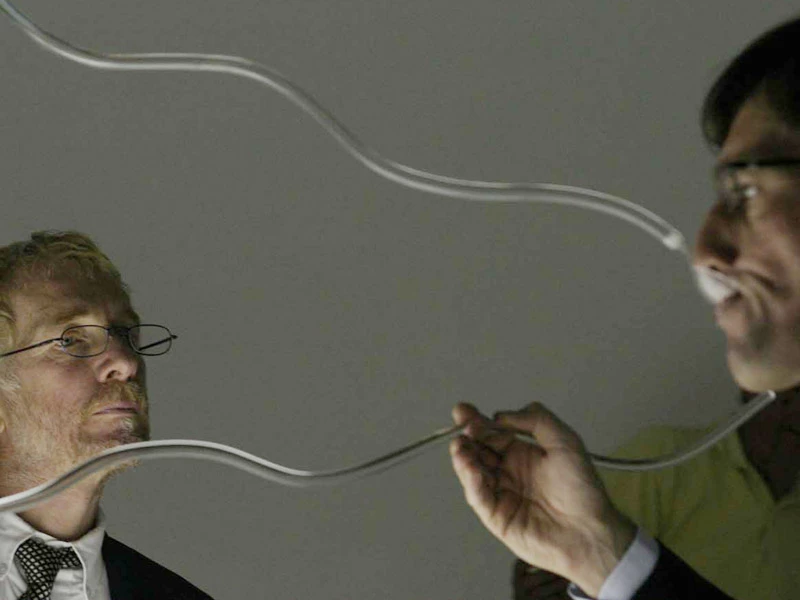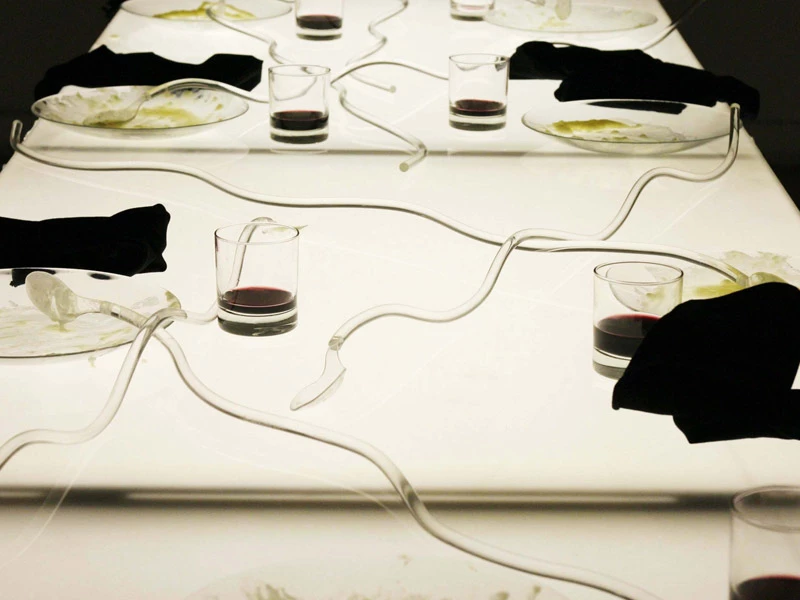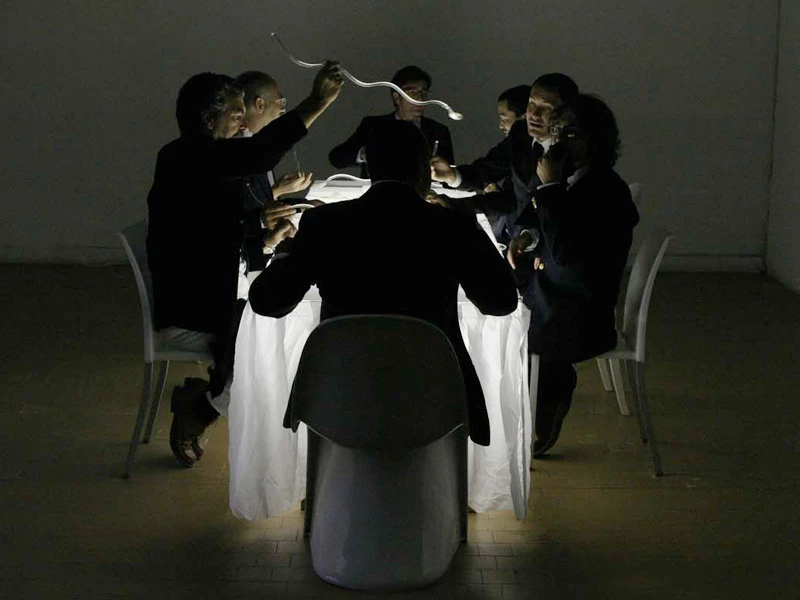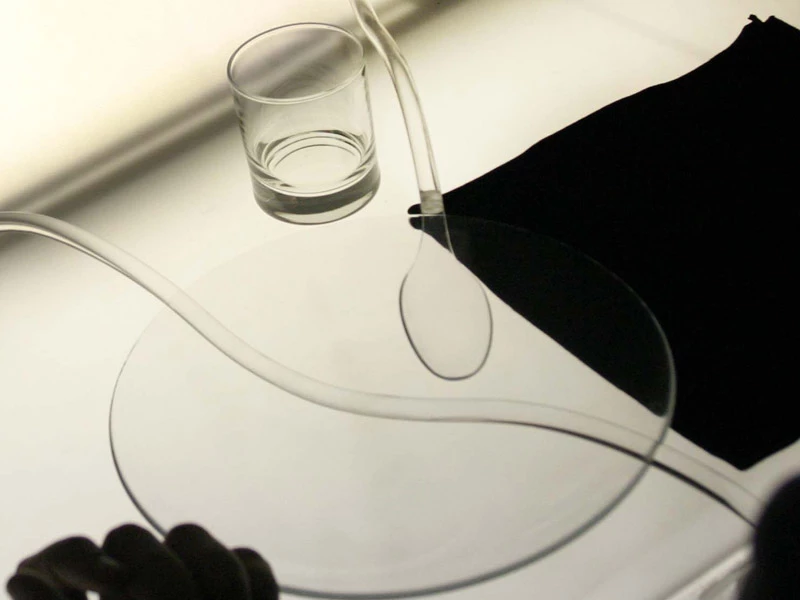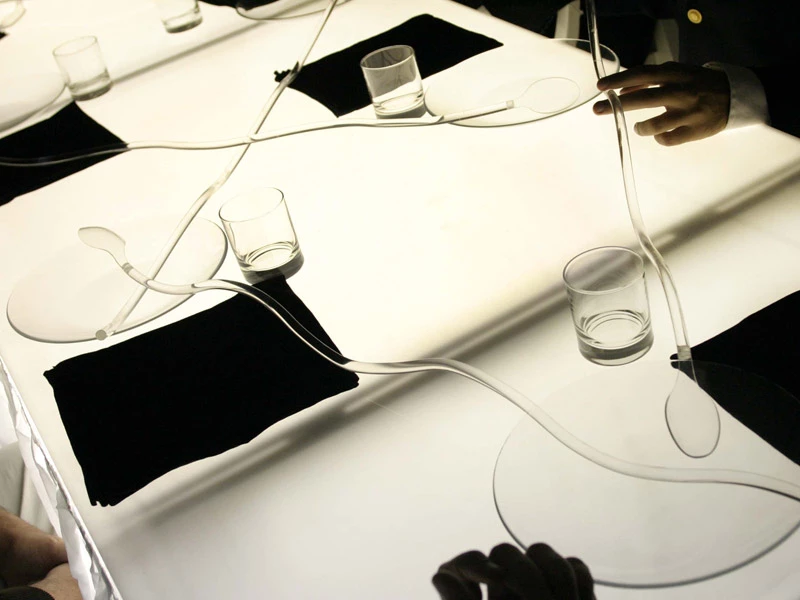Alessandra Cassinelli • Oris Hiatus
Men at dinner, elegantly dressed, seated at a glowing table. The diners feed each other using very long transparent spoons. They speak different languages and seem engaged in conversation, intertwining phrases and topics that are incomprehensible to us.
A surreal and ironic work in which human and relational issues emerge. Alessandra Cassinelli has worked for a long time in rehabilitation centers dealing with hardship and mental illness, using art as therapy in her relationship with patients. “The elderly feeding the young. Then the roles reverse, sometimes they are already reversed from the beginning, like peoples taking care of other peoples or not at all. Like mothers, like animals, like birds,” says the artist about her work.
At the origin of her work lies the need to show that the essence of sociality is the need for recognition. Feeding the other is a search for connection. The long spoons used perhaps serve to maintain distance in interpersonal relationships, or perhaps to overcome distance, to bring closer. The use of different languages and different topics speaks to the need to communicate—and the difficulty of listening.
These gestures, these attitudes also evoke the logic inherent in the spirit of gift-giving: to give, to receive, to reciprocate. In feeding and being fed, the bond can be more important than the food itself, and more broadly: the essence of the gift is not the object given, but the relationship it establishes.
Interpersonal relationships have always been at the center of Alessandra Cassinelli's work. Among her most recent works is Venezia 2001–2003, a 40-meter-long print depicting motionless people seen from behind, forcibly close yet without communication. In 2004, the performance that gave rise to the title Guelta (Saharan waterhole) featured another repetitive act: a woman in a pool filling transparent bags with water until the space is saturated.
The exhibition is composed of documentation from the performances and the artist's drawings.

